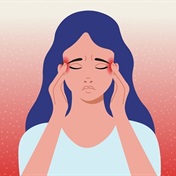This article has not necessarily been edited by Health24.
NEW YORK (Reuters Health) - Botox shots, known for smoothing wrinkles, are an "effective" preventive treatment for patients with chronic migraine, conclude the authors of a new study funded by the drug's makers.Patients given Botox had about eight fewer headache days a month after receiving the shots, compared to about seven fewer days for patients given placebo, the researchers found. (Before treatment, both groups averaged about 20 headache days per month).But both groups had the same reduction in migraines or headaches: about 5 percent.People with chronic migraine suffer headaches at least 15 days a month, and have typically not been included in studies of standard migraine prevention treatments such as painkillers and drugs called triptans "because they were considered to be too highly disabled and treatment resistant," Dr. David W. Dodick of the Mayo Clinic, Scottsdale in Arizona and colleagues note in the journal Headache.Botox injections have been tested in patients with less frequent migraines, as well as in chronic headache patients, and weren't any better than placebo, but other research found some chronic migraine patients did benefit from the shots.To investigate further, Dodick and colleagues at 66 sites in the US and Europe conducted two studies investigating Botox for chronic migraine patients. In the current report, the researchers describe the results of a pooled analysis of the studies, which included nearly 1,400 patients.Patients were randomly assigned to placebo injections or Botox, and received at least 31 injections in seven specific areas in muscles of the head and neck at the study's outset and again at 12 and 24 weeks. They received at least 155 units of the medication per treatment, and the investigators could give patients up to 40 more units at their discretion.Before treatment, patients in both groups averaged about 20 "headache days" a month, and about two-thirds of people in each group used headache pain medications at least twice a week, which the researchers defined as overuse.After 24 weeks, patients on placebo had 6.6 fewer headache days each month, compared to 8.4 fewer days for the patients given Botox. Side effects occurred in 63 percent of the patients in the Botox group and 52 percent of patients on placebo. Five percent of the Botox patients had serious side effects, compared to two percent of the placebo patients. Nearly nine percent of patients given Botox complained of neck pain and nearly 6 percent reported muscle weakness; colds were the most common adverse events in the placebo group, reported by about five percent.Botox is not Food and Drug Administration approved for treating migraine. The cost of Botox treatment varies, both by geographic area and from provider to provider; patients may be charged per unit ($10 to $15 is typical). This would translate to $1,550 to $2,325 for the minimum amount used in the current study.Allergan, Inc., the maker of Botox, funded the research. Dodick has received speaking fees from Allergan and several other pharmaceutical companies, while three of the current study's authors are Allergan employees and own stock in the company.




 Publications
Publications
 Partners
Partners














